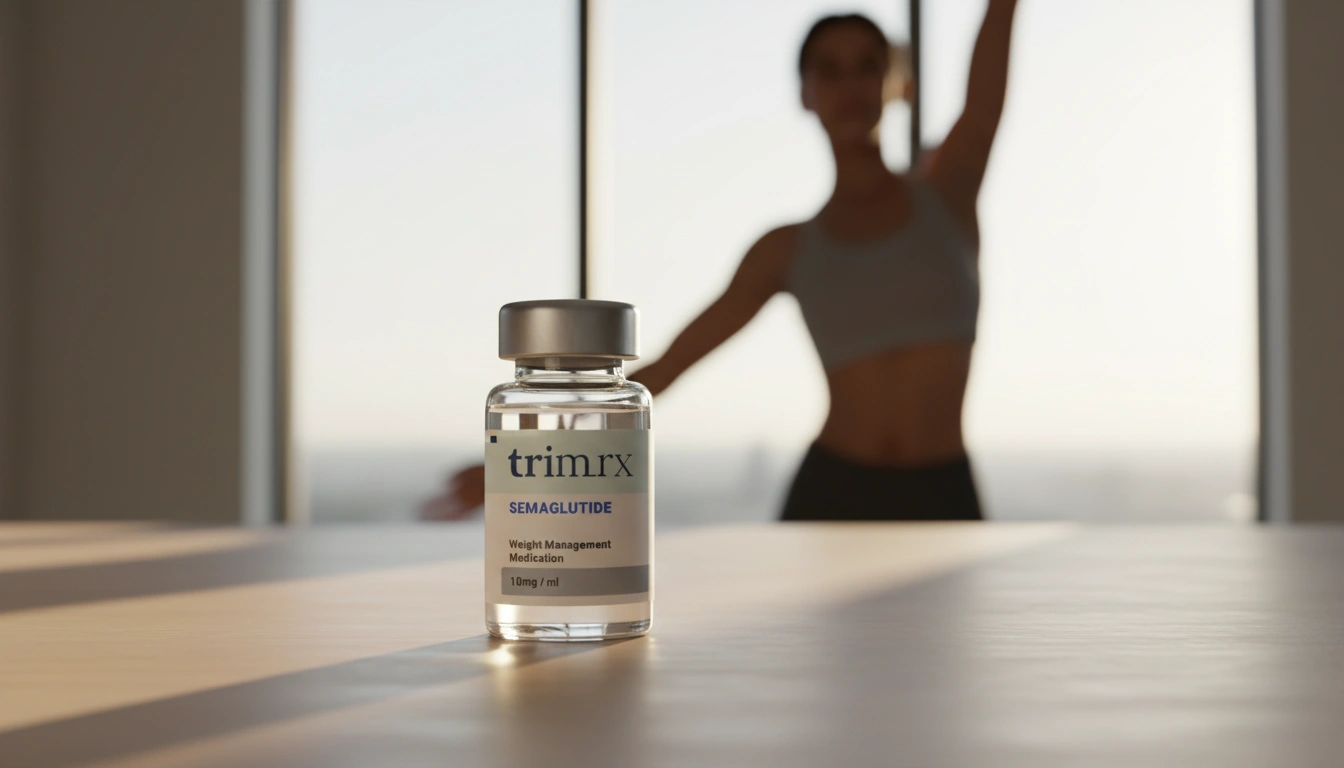Are Semaglutide Tablets the Same as the Injection?

Introduction
With the growing prevalence of obesity, affecting nearly 42% of adults in the United States according to the CDC, the demand for effective weight management solutions is at an all-time high. Among these solutions, semaglutide has emerged as a notable option, available in both oral tablets and injectable forms. This leads to a crucial question: Are semaglutide tablets the same as the injection?
In this blog post, we will explore the similarities and differences between semaglutide tablets and injections, their mechanisms of action, dosing regimens, side effects, and considerations for their use in weight management and diabetes treatment. By the end of this post, you’ll have a comprehensive understanding of these two formulations, enabling you to make informed decisions about your health.
Imagine finding a solution for weight loss that doesn’t just promise results but is grounded in clinical science and tailored to individual needs. This is where semaglutide comes into play. As a glucagon-like peptide-1 (GLP-1) receptor agonist, semaglutide has been proven effective in managing weight and improving glycemic control in individuals with type 2 diabetes.
Historically, semaglutide has been available in injectable form under the brand names Ozempic and Wegovy, primarily aimed at treating diabetes and aiding weight loss, respectively. More recently, oral semaglutide, marketed as Rybelsus, was introduced to provide a needle-free option for patients. This development raises important questions about the effectiveness, convenience, and overall experience of using either formulation.
Our purpose in this post is to dissect these two forms of semaglutide, examining their efficacy, administration methods, and the potential impact on your weight loss journey. We will highlight the importance of personalized care in selecting the right formulation, aligning with TrimRx’s mission of providing tailored, medically supervised weight loss solutions.
Throughout this blog, we’ll focus on the following key aspects:
- Mechanism of Action: How semaglutide works in the body.
- Formulation Differences: A detailed comparison between tablets and injections.
- Dosing Guidelines: Recommended regimens for each form.
- Side Effects and Tolerability: Understanding potential reactions.
- Conclusion and Guidance: Making informed choices for your health journey.
By the end of this article, we hope to empower you with the knowledge needed to navigate your weight loss options effectively.
Mechanism of Action
Semaglutide functions by mimicking the action of the GLP-1 hormone, which is naturally produced in the gut. This hormone plays a crucial role in regulating appetite and insulin secretion. When semaglutide is introduced to the body, it stimulates insulin release when blood sugar levels are high, reduces glucagon secretion, and slows gastric emptying, leading to increased feelings of fullness.
Benefits of GLP-1 Agonists
- Weight Loss: Semaglutide promotes significant weight loss by reducing appetite and food intake.
- Improved Glycemic Control: It aids in lowering blood glucose levels, making it particularly beneficial for individuals with type 2 diabetes.
- Cardiovascular Benefits: Studies have indicated that semaglutide may reduce the risk of major cardiovascular events in patients with diabetes.
This multifaceted approach makes semaglutide a compelling option for those seeking both weight management and improved metabolic health.
Formulation Differences: Oral Tablets vs. Injections
While both semaglutide tablets and injections contain the same active ingredient, their formulations differ significantly in terms of administration, absorption, and dosing frequency.
Administration Methods
- Tablets (Rybelsus): These are taken orally, once daily, on an empty stomach, and should be consumed with a small amount of water. It’s essential to avoid eating or drinking for at least 30 minutes after taking the tablet to ensure proper absorption.
- Injections (Ozempic/Wegovy): These are administered subcutaneously (under the skin) once a week. They can be injected in various locations, including the stomach, thigh, or upper arm, and can be taken at any time of day, with or without food.
Absorption and Bioavailability
The bioavailability of a medication refers to the proportion that enters circulation when introduced into the body and is available for therapeutic effect. Injectable semaglutide generally has higher bioavailability compared to oral semaglutide. This is because the injection method bypasses the digestive system, allowing for quicker and more consistent absorption.
- Oral Semaglutide: Due to its oral route, it may undergo first-pass metabolism in the liver, which can reduce its effectiveness. Therefore, higher doses (3-14 mg) are typically required compared to the injectable form.
- Injectable Semaglutide: The dosing ranges from 0.25 mg to 2 mg weekly, reflecting its higher potency and efficacy.
Efficacy Comparison
Clinical studies have shown that both formulations are effective for weight loss and blood sugar control. However, some evidence suggests that the injectable form may be slightly more effective due to its higher bioavailability. A 2021 review indicated that injectable semaglutide could lead to better reductions in A1C levels and weight compared to oral semaglutide, although oral semaglutide has also demonstrated significant efficacy.
Summary of Key Differences
| Feature | Oral Semaglutide (Rybelsus) | Injectable Semaglutide (Ozempic/Wegovy) |
|---|---|---|
| Administration | Oral, once daily | Subcutaneous, once weekly |
| Dosage | 3-14 mg | 0.25-2 mg |
| Absorption | Lower bioavailability | Higher bioavailability |
| Convenience | No needles required | Requires injections |
| Side Effects | More gastrointestinal issues | May include injection site reactions |
Dosing Guidelines
Understanding the dosing regimens for both formulations is crucial for effective treatment.
Oral Semaglutide (Rybelsus)
- Starting Dose: Typically begins at 3 mg once daily for 30 days.
- Maintenance Dose: If needed, the dose may be increased to 7 mg, and then to a maximum of 14 mg based on individual response and tolerance.
Injectable Semaglutide (Ozempic/Wegovy)
- Starting Dose: Begins at 0.25 mg once weekly for 4 weeks, primarily for titration to minimize side effects.
- Maintenance Dose: The dose may be increased to 0.5 mg, then to 1 mg, and finally up to 2 mg weekly, depending on clinical goals.
Importance of Adherence
For both formulations, adherence to the prescribed regimen is vital for achieving optimal results. Regular consultations with healthcare providers can help ensure that the chosen treatment plan aligns with individual health goals and responds to any emerging needs.
Side Effects and Tolerability
As with any medication, semaglutide can cause side effects. Understanding these potential reactions is essential for managing expectations and ensuring a safe treatment journey.
Common Side Effects
Both oral and injectable forms of semaglutide can have gastrointestinal side effects, including:
- Nausea
- Vomiting
- Diarrhea
- Abdominal pain
These side effects are typically more pronounced when starting treatment and may diminish over time as the body adjusts.
Injection-Specific Side Effects
For injectable semaglutide, additional side effects may include:
- Injection site reactions (redness, swelling, or itching)
- Potential for pancreatitis (inflammation of the pancreas)
- Risk of gallbladder disease
Tolerability Differences
Research indicates that oral semaglutide may lead to higher rates of gastrointestinal side effects compared to the injectable form. The preference for administration—whether oral or injectable—can also influence patient compliance and overall satisfaction with the treatment.
Managing Side Effects
To mitigate side effects, healthcare providers may recommend gradual dosage adjustments, dietary modifications, and regular monitoring. If side effects persist or become severe, it is essential to consult with a healthcare professional for tailored advice and potential alternative therapies.
Conclusion and Guidance
In summary, semaglutide is an effective tool for weight management and glycemic control, available in both oral and injectable formulations. While both forms share the same active ingredient and therapeutic goals, they differ significantly in administration, dosing, and side effect profiles.
As we’ve discussed, choosing between semaglutide tablets and injections largely depends on individual preferences, lifestyle factors, and specific health needs. At TrimRx, we emphasize the importance of personalized care in weight loss journeys, ensuring that our clients receive tailored recommendations based on their unique circumstances.
If you’re considering semaglutide for weight management or diabetes management, we encourage you to take our free assessment quiz to determine your eligibility for our personalized weight loss program, which includes medically supervised care and support. You can access the quiz here.
Additionally, our GLP-1 Daily Support and Weight Loss Boost supplements are available for those seeking immediate support on their weight loss journeys. Explore our offerings for a comprehensive approach to achieving your health goals: GLP-1 Daily Support and Weight Loss Boost.
FAQ
Are semaglutide tablets as effective as the injections?
While both formulations are effective for weight loss and blood sugar control, some studies suggest that the injectable form may have slightly superior efficacy due to higher bioavailability.
How do I choose between oral and injectable semaglutide?
The choice often depends on personal preferences, lifestyle, and medical considerations. Consult with a healthcare professional to determine the best option for your needs.
What are the common side effects of semaglutide?
Common side effects include gastrointestinal issues such as nausea, vomiting, and diarrhea. Injectable forms may also cause injection site reactions.
Can I switch from oral to injectable semaglutide?
Yes, switching formulations is possible but should be done under the guidance of a healthcare provider to ensure safety and efficacy.
How long does it take to see results with semaglutide?
Individuals may begin to see results in weight loss and blood sugar management within a few weeks, but optimal results typically require consistent use over several months.
By understanding the key differences and considerations between semaglutide tablets and injections, you can make informed decisions that align with your health goals. At TrimRx, we are dedicated to supporting you every step of the way on your journey toward a healthier lifestyle.

Transforming Lives, One Step at a Time
Keep reading
Navigating Your Journey: What Is a Good Maintenance Dose of Semaglutide for Lasting Results?
Wondering “what is a good maintenance dose of semaglutide”? Discover how to sustain your weight loss effectively with personalized dosing strategies, lifestyle tips, and expert support. Get started today!
Sustaining Success: What is the Semaglutide Maintenance Dose and Why it Matters
Curious about what is the semaglutide maintenance dose? Discover how it helps sustain weight loss & prevent regain. Get expert insights for lasting results!
Optimal Semaglutide Dosing for Your Weight Loss Journey
Curious what is full dose of semaglutide? Discover how this powerful medication is dosed for weight management and type 2 diabetes. Get personalized insights!



